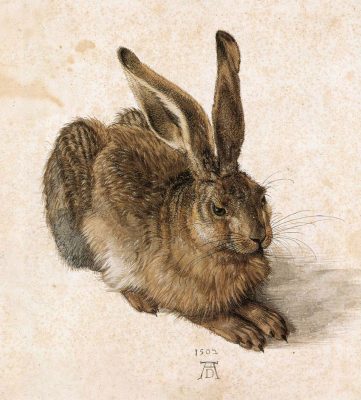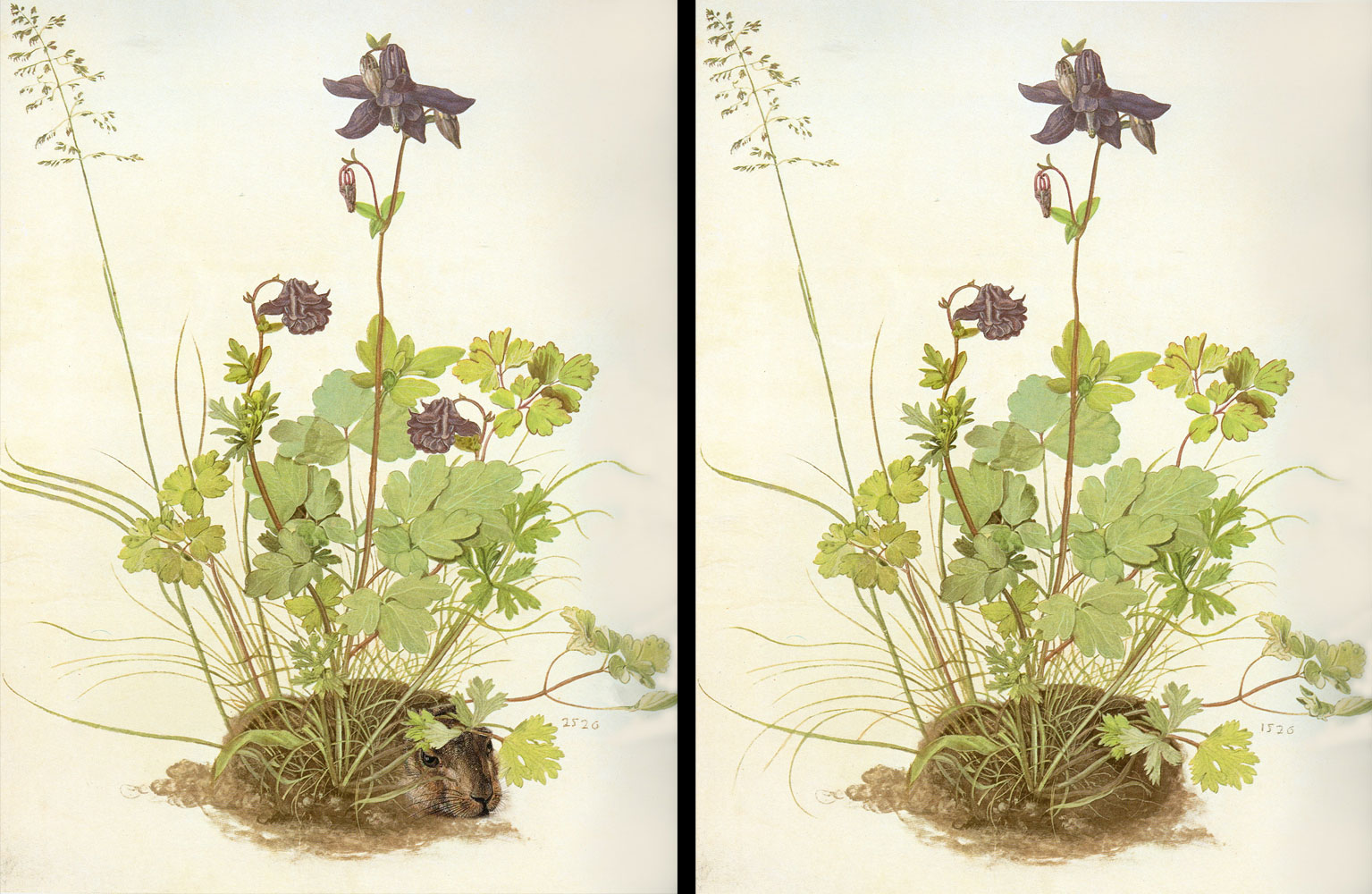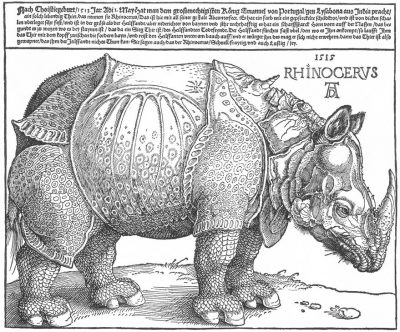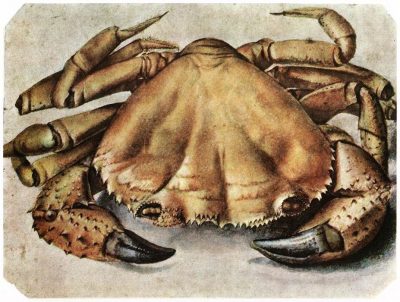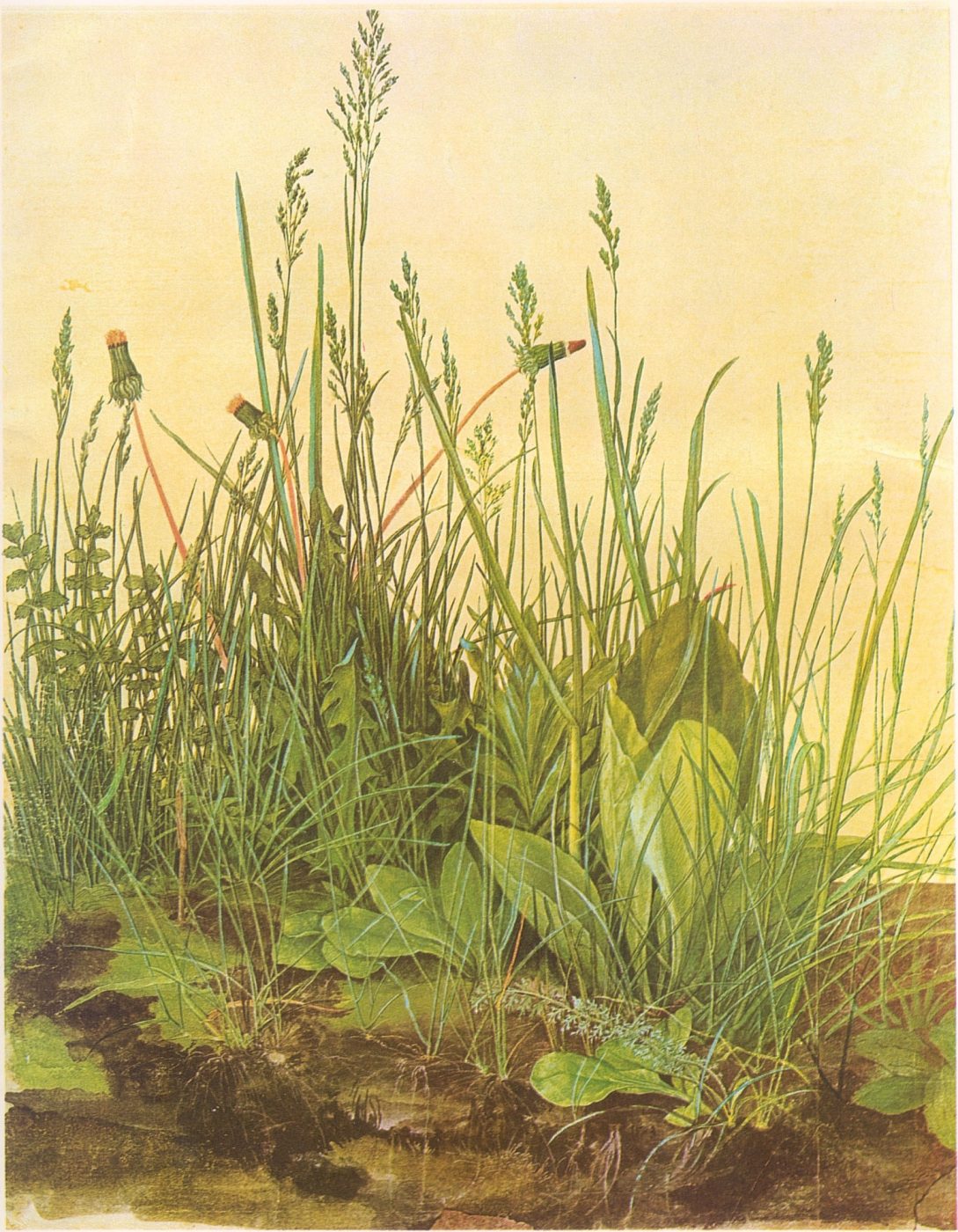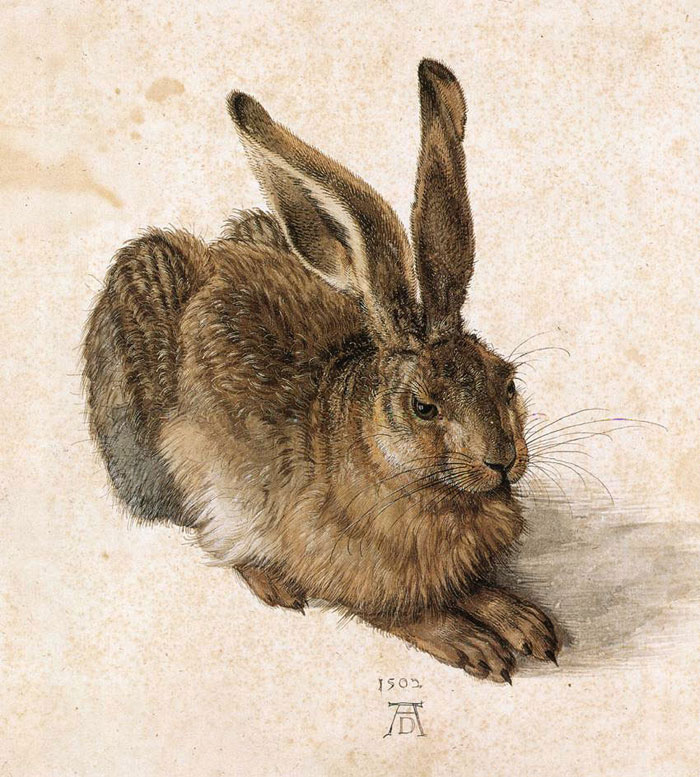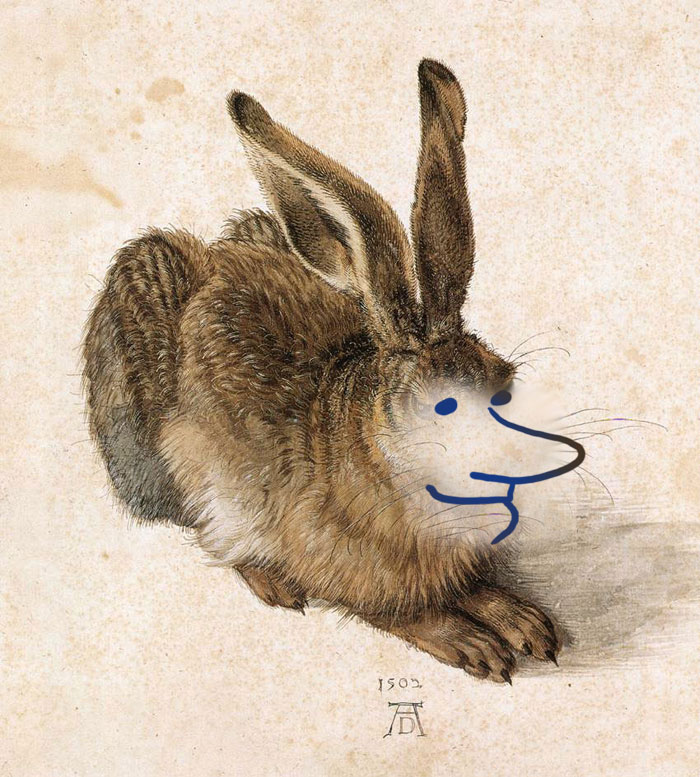500 years ago Albrecht Dürer (1471 – 1528) drew his famous hare. The drawing is preserved in a dark room in the Albertina in Vienna to protect it from sunlight. He drew the hare when the Renaissance was in full swing. Suddenly it was accepted to draw non-religious motives and Dürer did it with great passion. His drawings of ‘ordinary’ things like grass or animals are still, 500 years later, breathtaking in their accuracy and love of detail. Of course nowadays we can take photographs to depict nature and yet, how difficult is it to compose an image and keep the interest of the viewer? Dürer, as a true artist, masters this feat.
Have a look at his Hare and explore it in detail. Dürer’s Hare teaches us that art can be timelessly beautiful.
In the Renaissance, scientific observations of ordinary things, for example a patch of grass, valued the beauty in our world as opposed to the heavens. Studies of the human naked body, portraits, or landscapes were not longer considered heresy. The Renaissance propelled art and science into a new century and inspired artists from all over Europe to travel to Italy. So did Dürer and brought back a new confidence in his approach to art. Look at the subtle blades of grass on the right side of the drawing ‘Akelei-Blume (Aquilegia)’. Although they appear naturally bent, Renaissance art was well thought through and anything but random. It is of course the art to make it look effortlessly easy.
Akelei-Blume: Can you spot the differences? The original is on the RIGHT side.
(solution see down below)
Dürer himself never saw a rhino. One rhino had been shipped 1515 to Rome via Lisbon from India. Unfortunately it was dead on arrival but an unknown artist managed to take a look and make some sketches. Dürer copied the sketch and for the next 250 years created a standard for how Europeans thought a rhino to look like. His harness like depiction of the rhino is thought to be the reason for the German word for rhino ‘das Panzernashorn’ which directly translated would be ‘harnessed rhino’. In the 18th century the first rhinos arrive and life drawings could be done.
Hey, some museum guard really made a big mess!
Disclaimer all images are public domain see here
